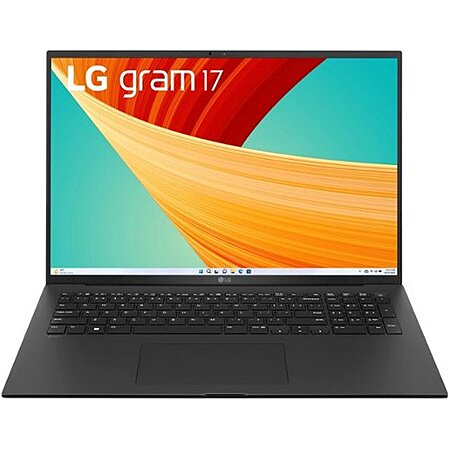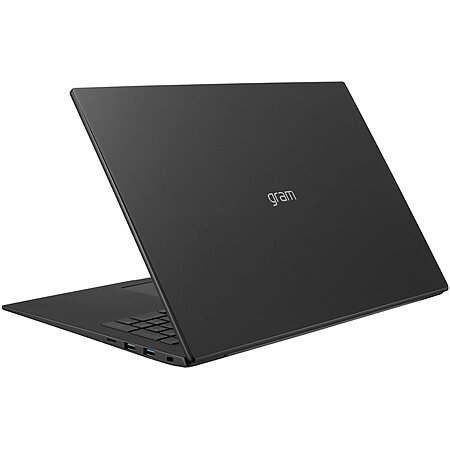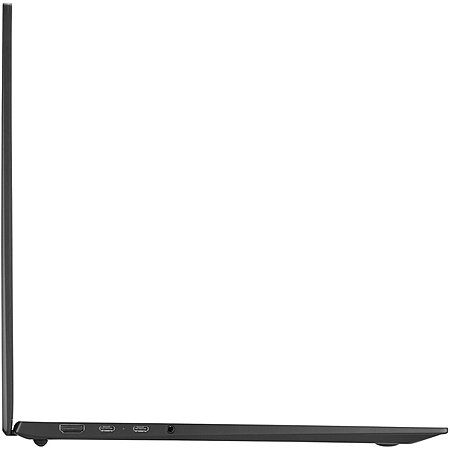Best Buy via eBay has
LG Gram 17" Laptop (17ZB90R-G.ADY8U1) on sale for
$999.
Shipping is free.
Best Buy also has
LG Gram 17" Laptop (17ZB90R-G.ADY8U1) on sale for
$999.
Shipping is free.
Thanks to Community Member
Dr.Wajahat for finding this deal.
Specs (
source):
- Intel Evo Platform Powered by 13th Gen Intel Core i7 1360P (12-Core) Processor
- 17" IPS WQXGA (2560 x 1600) 350-Nits Non-Reflective Display
- 32GB 4266 MHz LPDDR4 RAM
- 1TB PCIe4 M.2 NVMe Solid State Drive
- Intel Iris Xe Graphics
- Intel Wi-Fi 6E + Bluetooth
- Backlit Keyboard
- HD Audio with Dolby Atmos
- Windows 11 Home
- 80Wh Battery
- Ports:
- 1x HDMI
- 1x Thunderbolt 4
- 2x USB-A 3.2
- 2x USB-C 3.2







Leave a Comment
Top Comments
Data Rate and Bandwidth: DDR5 offers higher data rates than DDR4. DDR4 typically operates at speeds between 1600 MT/s (million transfers per second) and 3200 MT/s, while DDR5 starts at around 4800 MT/s and is expected to reach speeds up to 8400 MT/s or more. This higher data rate means DDR5 can transfer more data per second, significantly improving performance.
Increased Efficiency: DDR5 RAM introduces improved power management features compared to DDR4. It operates at a lower voltage (1.1V for DDR5 vs 1.2V for DDR4), which reduces power consumption and heat generation. Additionally, DDR5 incorporates on-die ECC (Error Correction Code), which helps in improving data integrity and reliability.
Channel Architecture: DDR5 introduces a change in memory architecture. Each DDR5 DIMM has two independent 32-bit channels (total 64-bit), compared to a single 64-bit channel in DDR4. This change allows for better utilization of memory bandwidth and more efficient handling of smaller data requests, leading to increased performance in multitasking and data-intensive applications.
Increased Capacities: DDR5 supports larger capacity modules than DDR4. While DDR4 commonly maxes out at 16 GB per chip, DDR5 is expected to support chip densities up to 64 GB. This means you can have much more RAM in a single system, benefiting data-intensive applications like server environments, large databases, and high-end gaming.
Improved Scalability and Future-Proofing: DDR5 is designed with future scalability in mind. It supports higher data rates and capacities, which means it is better equipped to handle future computing demands compared to DDR4.
54 Comments
Sign up for a Slickdeals account to remove this ad.
Sign up for a Slickdeals account to remove this ad.
Our community has rated this post as helpful. If you agree, why not thank yugstar
The keyboard is a 3 out of 10, very frustrating (at least on the 2023 unite I returned to Costco). People say the touchpad also sucks.
Everything else is fantastic: great price, light weight, large screen, good battery life, great performance for the price and weight.
I wish they could give this thing a good keyboard and adequate speakers.
Our community has rated this post as helpful. If you agree, why not thank noobsthename
Data Rate and Bandwidth: DDR5 offers higher data rates than DDR4. DDR4 typically operates at speeds between 1600 MT/s (million transfers per second) and 3200 MT/s, while DDR5 starts at around 4800 MT/s and is expected to reach speeds up to 8400 MT/s or more. This higher data rate means DDR5 can transfer more data per second, significantly improving performance.
Increased Efficiency: DDR5 RAM introduces improved power management features compared to DDR4. It operates at a lower voltage (1.1V for DDR5 vs 1.2V for DDR4), which reduces power consumption and heat generation. Additionally, DDR5 incorporates on-die ECC (Error Correction Code), which helps in improving data integrity and reliability.
Channel Architecture: DDR5 introduces a change in memory architecture. Each DDR5 DIMM has two independent 32-bit channels (total 64-bit), compared to a single 64-bit channel in DDR4. This change allows for better utilization of memory bandwidth and more efficient handling of smaller data requests, leading to increased performance in multitasking and data-intensive applications.
Increased Capacities: DDR5 supports larger capacity modules than DDR4. While DDR4 commonly maxes out at 16 GB per chip, DDR5 is expected to support chip densities up to 64 GB. This means you can have much more RAM in a single system, benefiting data-intensive applications like server environments, large databases, and high-end gaming.
Improved Scalability and Future-Proofing: DDR5 is designed with future scalability in mind. It supports higher data rates and capacities, which means it is better equipped to handle future computing demands compared to DDR4.
Plus the Costco model has a 2-year warranty.
But $400 more. Any thoughts?
Sign up for a Slickdeals account to remove this ad.
Plus the Costco model has a 2-year warranty.
But $400 more. Any thoughts?
Thoughts?
Leave a Comment